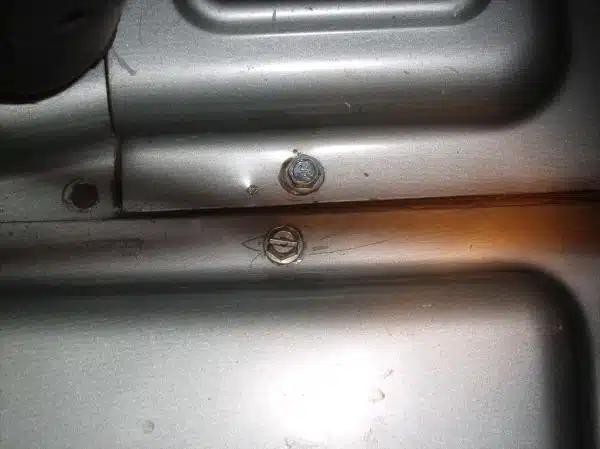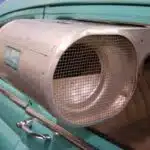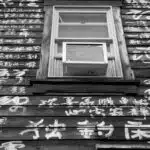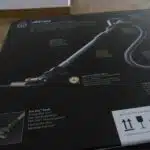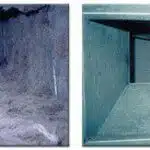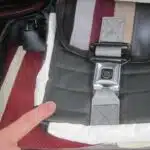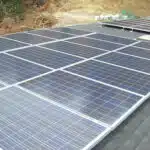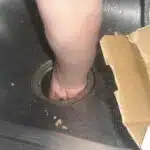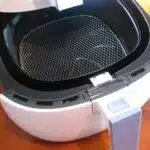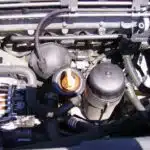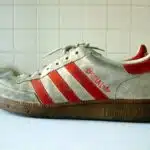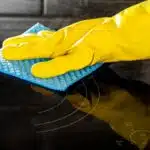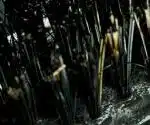As an HVAC technician, it is essential to have a comprehensive understanding of air conditioner coils and their maintenance. The coils play a crucial role in the cooling process, and if they are not adequately maintained, the system may become inefficient or even fail. One of the most common problems with air conditioners is dirty coils, which can lead to reduced system efficiency, higher electricity bills, and even compressor failure. Therefore, learning how to clean air conditioner coils is an essential skill for anyone in the HVAC industry.
Cleaning air conditioner coils requires careful attention to detail and following specific procedures. The primary objective of cleaning coils is to remove dirt and debris that accumulates on them over time. This buildup can prevent efficient heat transfer between the refrigerant and the surrounding air, leading to reduced airflow and increased energy consumption. In this article, we will cover everything you need to know about cleaning air conditioner coils, including why it’s necessary, when to do it, and how to do it correctly. By following these guidelines, you can ensure that your customer’s air conditioning systems run efficiently and reliably while providing top-notch service at all times.
The Importance Of Regular Maintenance For Air Conditioners
An air conditioner is a significant investment in any household or commercial building, and as such, it requires regular maintenance to function optimally. Neglecting your air conditioner’s upkeep can lead to various issues such as inefficient cooling, increased energy bills, and even costly repairs or replacement. As a hvac technician, I have seen firsthand the benefits of professional air conditioner maintenance and the consequences of neglecting it.
Professional air conditioner maintenance involves comprehensive cleaning, inspection, and adjustments that help ensure optimal performance. Among the benefits of this type of service include improved energy efficiency, reduced wear and tear on parts, extended lifespan of the unit and fewer breakdowns. While professional maintenance may seem expensive upfront, it ultimately saves you money in the long run by preventing costly repairs.
One way to maintain your air conditioner’s efficiency is through DIY methods. For instance, regularly cleaning or replacing the unit’s filters helps improve airflow and prevent dirt buildup on coils. Additionally, keeping debris away from outdoor units helps prevent clogs that can impact efficiency. It’s important to note that while DIY methods are helpful in maintaining your AC’s performance, they don’t replace professional maintenance entirely.
Understanding How Air Conditioner Coils Work
Air conditioner coils work by exchanging heat between the indoor and outdoor units. The evaporator coil absorbs heat from inside the building, while the condenser coil releases it outside. Both coils have a set of fins that allow air to flow through them, facilitating heat exchange. Over time, these fins can become clogged with dirt and debris, reducing their efficiency and causing problems in the system.
The importance of regular maintenance cannot be overstated when it comes to air conditioner coils. Neglecting maintenance can lead to dirty or damaged coils, which can cause the system to malfunction or even fail completely. Fortunately, there are steps you can take to troubleshoot coil problems at home. If your air conditioner is not cooling properly or is making strange noises, it may be time to inspect the coils for signs of damage or dirt buildup.
In order to avoid costly repairs or replacements down the line, it’s crucial to keep air conditioner coils clean and functioning properly. In the next section, we will discuss some common signs of dirty coils that you should be aware of in order to catch problems early on. By staying vigilant and performing routine maintenance on your HVAC system, you can ensure that your home stays cool and comfortable throughout the summer months.
Signs Of Dirty Coils
Foul odors are often a sign of dirty air conditioner coils and can be caused by a build up of dust and dirt. Reduced efficiency can also be a sign of dirty coils since the build up of dirt is inhibiting the proper airflow. Mold growth is another symptom of dirty coils and should be addressed immediately to prevent further damage to the system. Regular cleaning and maintenance of air conditioner coils is essential to ensure optimal performance.
Foul Odor
As HVAC technicians, we often encounter foul odors emanating from air conditioning units. These unpleasant smells can be a sign of dirty coils and should be addressed immediately to prevent further damage. The accumulation of dust and dirt on AC coils creates a breeding ground for mold, bacteria, and other microorganisms that contribute to bad odor.
To eliminate the odor, it is essential to clean the AC coils thoroughly. One effective method is by using deodorizing techniques such as using an antibacterial cleaner or spraying a mixture of water and vinegar onto the coils. Afterward, rinse the coils with water and allow them to dry before turning on the unit. Additionally, installing ultraviolet lights in the air conditioning system can prevent mold growth and reduce odors.
As HVAC technicians, our goal is to provide excellent service to our clients by ensuring their comfort and safety. Eliminating odor from dirty AC coils not only improves indoor air quality but also prevents health issues caused by poor air circulation. Therefore, it is imperative for homeowners to schedule regular maintenance services with certified professionals to keep their units running efficiently and maintain a healthy living environment for themselves and their loved ones.
Reduced Efficiency
Dirty AC coils not only cause unpleasant odors but also reduce the efficiency of the air conditioning system. When dust and dirt accumulate on the coils, they create a barrier that hinders heat transfer, causing the unit to work harder to cool or heat the indoor space. This increased workload results in higher energy bills and a shorter lifespan for the equipment. Therefore, it is crucial to address dirty coils promptly to prevent reduced efficiency.
One way to prevent reduced efficiency caused by dirty AC coils is by scheduling professional coil cleaning services. HVAC technicians have specialized tools and expertise that allow them to thoroughly clean and maintain AC systems. They can remove debris from the coils, check for leaks, and ensure that all components are functioning correctly. Regular maintenance services can help homeowners save money on energy bills while improving indoor air quality.
Another way to prevent reduced efficiency is by regularly changing air filters. Dirty filters restrict airflow, making it harder for the air conditioning unit to draw in fresh air from outside. This leads to increased workload, reduced efficiency, and poor indoor air quality. Homeowners should replace their filters every one to three months depending on usage or as recommended by their HVAC technician.
In summary, dirty AC coils can cause foul odors and reduce system efficiency if not addressed promptly. Scheduling professional coil cleaning services and replacing air filters regularly are effective ways of preventing reduced efficiency while improving indoor air quality. As HVAC technicians, our goal is always to provide excellent service that ensures our clients’ comfort and safety while promoting energy-efficient practices that benefit both individuals and communities alike.
Tools And Materials Needed For Cleaning Coils
When it comes to cleaning AC coils, having the right tools and materials is crucial. It is essential to choose appropriate cleaners for the type of coil you are cleaning. There are different types of coils, such as evaporator and condenser coils, and each may require a different type of cleaner. For example, some coils may need an alkaline-based cleaner, while others may require an acid-based solution. It is important to consult with the manufacturer’s recommendations or speak with a professional technician to ensure that you are using the appropriate cleaners.
Maintaining coil cleaning equipment is equally important. The equipment used for coil cleaning can become contaminated over time, which can lead to poor performance or even damage to the unit itself. Regularly inspecting and replacing equipment such as brushes, sprayers, and pumps will help ensure that your cleaning process remains effective and efficient. Additionally, storing equipment properly when not in use will help prevent it from becoming damaged or contaminated.
Properly maintaining your tools and choosing appropriate cleaners can help ensure that your AC coils are cleaned effectively without causing damage to the unit itself. In the next section, we will discuss safety precautions that should be taken before beginning the cleaning process to avoid any potential hazards or accidents.
Safety Precautions To Take Before Cleaning Coils
To ensure a safe and successful cleaning process, it is important to take certain precautions before starting. Preventing electrocution is crucial, and the first step in doing so is to turn off the power supply to the air conditioner unit. This can be done at the circuit breaker or by unplugging the unit. After this, it is recommended to test the unit with a voltage meter to ensure that no electrical current is still present.
Respiratory protection during cleaning is also highly recommended. Airborne particles from debris and dust can be harmful when inhaled, causing respiratory problems. Wearing a mask that covers both the nose and mouth can protect against these particles. Additionally, gloves should be worn to protect hands from sharp edges or chemicals used during cleaning.
Finally, it is important to clean up any spills or debris that may have accumulated around the unit before starting. This will not only create a safer environment but also make it easier to access all areas of the coil for cleaning. By taking these safety precautions before starting, the cleaning process will be much smoother and safer overall.
Transitioning into the next section, once all safety measures have been taken care of, it’s time to move on to steps for cleaning coils.
Steps For Cleaning Coils
Coil cleaning frequency is an important consideration for maintaining the efficiency of your air conditioning unit. The frequency will vary depending on factors such as usage and location, but it is generally recommended to clean the coils at least once a year. Neglecting this task can lead to a buildup of dirt, dust, and other debris that can reduce the airflow and cause your unit to work harder than necessary.
When it comes to cleaning air conditioner coils, you have two options: DIY or professional cleaning. A DIY approach involves using simple tools such as a vacuum cleaner or a soft-bristled brush to remove any visible debris from the coils. However, this method may not be effective in removing all the buildup on the coils. Professional cleaning, on the other hand, involves using specialized equipment to thoroughly clean the coils and ensure maximum efficiency.
Ultimately, whether you choose DIY or professional coil cleaning depends on several factors such as your budget, time availability, and level of expertise. If you have experience working with HVAC systems and access to the right tools, you may be able to successfully clean your air conditioner coils yourself. However, if you are unsure about how to proceed or don’t want to risk damaging your unit, it’s best to hire a certified technician for professional coil cleaning services.
Transition: With that in mind, let’s move onto the next step in our guide – removing the coil cover.
Removing The Coil Cover
After completing the initial steps for cleaning coils, it’s time to remove the coil cover. However, sometimes this can be a difficult task due to various reasons. One common reason is that the screws holding the cover in place may be rusted or stuck. In such cases, it’s important to use a penetrating oil like WD-40 and allow it to sit for a few minutes before attempting to remove the screws.
Another reason for stuck coil covers could be due to damage caused by previous attempts at removal. It’s crucial to handle the cover with care and avoid using excessive force as it can result in bending or breaking of the cover. If there are any damages, it’s advisable to replace the cover altogether.
To prevent damage to the coil cover during future cleanings, there are some tips that HVAC technicians follow. First, they ensure that all tools used for removing screws and other parts are in good condition and functioning properly. Second, they inspect the area around the coil cover for any debris or other objects that could cause damage while removing or reattaching the cover.
In summary, removing a stuck coil cover can be challenging but using penetrating oil and careful handling can make all the difference. Preventing damage during future cleanings involves proper tool maintenance and inspection of surrounding areas before beginning work on removing or reattaching components. Next up is vacuuming the coils which is an essential step in maintaining your air conditioner’s efficiency and lifespan.
Vacuuming The Coils
Did you know that dirty air conditioner coils can increase energy consumption by up to 30%? This is why it’s important to clean your coils regularly. In the previous section, we discussed how to remove debris from the coils. Now, let’s move on to vacuuming them.
To start, you will need a vacuum attachment specifically designed for cleaning air conditioner coils. This attachment will have soft bristles that won’t damage the fins of the coil. Begin by attaching the tool to your vacuum cleaner and turning it on. Move the attachment over the surface of the coil in a back-and-forth motion, being careful not to apply too much pressure.
Coil cleaning solution is often marketed as an effective method for cleaning air conditioner coils, but how does it compare to vacuuming? While coil cleaning solution can be effective in breaking down dirt and grime on the coils, it can also cause damage if not used properly. Vacuuming is a safer option and doesn’t require any chemicals or solutions. However, if you do choose to use a cleaning solution, be sure to follow the manufacturer’s instructions carefully.
Now that we’ve covered vacuuming the coils, let’s move on to brushing them.
Brushing The Coils
When it comes to cleaning air conditioner coils, brushing them is a crucial step. This helps remove dust and debris that may have accumulated on the coils. There are different types of brushes that you can use for this task, including soft-bristled brushes or coil fin combs.
Soft-bristled brushes are ideal for cleaning delicate fins, while coil fin combs are more effective in removing tough debris. When selecting a brush, you should consider the type of coil you have and the level of dirt or debris that has accumulated. In addition, make sure to choose a brush with bristles that won’t damage your coils.
Techniques for efficient coil brushing include starting from the top down and using gentle strokes. Avoid applying too much pressure as this can cause damage to your coils. Also, make sure that you brush all sides of the coil fins evenly to ensure thorough cleaning.
Next up is rinsing the coils which involves using water to remove any remaining dirt or debris. This will be discussed in detail in the next section. Remember, proper cleaning of your air conditioner’s coils can help improve its performance and lower your energy bills.
Rinsing The Coils
Rinsing the coils is an important step in cleaning air conditioner coils. Using a pressure washer for coil cleaning is a great way to remove dirt and debris from the coils. This method works well because it allows you to reach all areas of the coils, ensuring that they are thoroughly cleaned.
Another option for rinsing air conditioner coils is using a homemade coil cleaning solution. This solution can be made by mixing water and vinegar in equal parts. The mixture should then be applied to the coils using a spray bottle or garden sprayer. After the solution has been applied, the coils can be rinsed with water using a pressure washer or hose.
When rinsing air conditioner coils, it’s important to use caution and avoid damaging the fins on the coils. It’s recommended to use a pressure washer with adjustable pressure settings so that you can control the amount of pressure used. Additionally, it’s important to rinse both sides of the coils thoroughly to ensure that all dirt and debris has been removed before moving on to applying coil cleaner.
Transition: Now that we have successfully rinsed the air conditioner coils, it’s time to move on to applying coil cleaner for even more thorough cleaning results.
Applying Coil Cleaner
Prior to cleaning coils, it is necessary to turn off the power to the unit and to ensure that the area around the unit is free of any debris. A brush should be used to lightly remove any dust or dirt from the coils. Coil cleaner should then be applied according to the manufacturer’s instructions, ensuring all coils are covered. Finally, the cleaner should be allowed to sit for the recommended time before washing it off with water.
Preparing For Cleaning
Preparing for maintenance is an essential step in ensuring that your air conditioner coils are properly cleaned. Before starting the cleaning process, it is important to turn off the power supply to the unit. This will prevent any electrical hazards from occurring while you are working on the unit. Additionally, if you are using coil cleaner, make sure to read the instructions carefully before applying it to your air conditioner coils.
Cleaning safety should always be a top priority when preparing for maintenance. It is crucial to wear protective gear such as gloves and goggles when handling coil cleaner as it can be harmful if it comes into contact with skin or eyes. Furthermore, be cautious when operating ladders or other equipment used to access the air conditioner coils. Always ensure that you have a sturdy surface to stand on and that you are not at risk of falling.
Once you have taken all necessary precautions for cleaning safety and prepared for maintenance, it is time to move on to applying coil cleaner. Follow the manufacturer’s instructions carefully and apply the cleaner evenly across all parts of the coils. Allow sufficient time for the cleaner to work its magic before rinsing off any excess residue with water. By taking these steps, you can ensure that your air conditioner coils are clean and in good working condition.
Applying Coil Cleaner
After preparing for maintenance, the next step is applying coil cleaner to the air conditioner coils. There are different types of coil cleaners available in the market, such as alkaline-based and acid-based cleaners. Alkaline-based cleaners are suitable for removing dirt, grease, and grime from coils, while acid-based cleaners are effective in removing rust and scale buildup. It is essential to choose the right type of cleaner based on your air conditioner’s needs.
When applying coil cleaner, it is crucial to follow best practices to ensure optimum results. Firstly, turn off the power supply to the unit before application. Use protective gear such as gloves and goggles to safeguard yourself from any harmful chemicals present in the cleaner. Secondly, apply the cleaner evenly across all parts of the coils, making sure not to miss any spots. Allow sufficient time for the cleaner to work according to manufacturer’s instructions before rinsing off any excess residue with water.
In conclusion, applying coil cleaner is an essential step in maintaining your air conditioner’s efficiency and durability. By choosing the right type of cleaner and following best practices for its application, you can ensure that your air conditioner coils remain clean and in good working condition. Regular maintenance can help prevent costly repairs or replacements down the line while providing optimal performance during hot summers or chilly winters.
Reassembling The Coil Cover
As an HVAC technician, reassembling the coil cover is a crucial step in air conditioner maintenance. After thoroughly cleaning the coils, it is essential to ensure that the coil cover is securely placed back on top of the unit. The coil cover serves as a protective barrier to prevent debris and dust from entering the coils.
To begin with, carefully align the coil cover over the unit and ensure that it fits snugly into place. Next, use screws or clips to securely fasten the cover onto the unit. Be careful not to overtighten any screws or clips as this may damage the unit or cause it to malfunction.
Regular coil cover maintenance is also necessary to keep your air conditioning system running smoothly. It is recommended that you clean your coil covers at least twice a year to prevent any buildup of dirt or debris. Neglecting this maintenance can lead to reduced efficiency and even complete system failure over time.
With these steps completed, testing the system becomes crucial in ensuring that everything has been reassembled correctly. A thorough test of all components should be conducted to verify that there are no leaks or issues with functionality. This step will help detect any potential problems before they become significant issues down the road.
Testing The System
After cleaning your air conditioner coils, it is important to test the system to ensure that it is functioning properly. There are several testing procedures that an HVAC technician can perform to determine if there are any issues with the system. These tests include checking for proper airflow and temperature control, as well as examining the electrical components, such as capacitors and relays.
One troubleshooting technique that technicians use when testing the system is to check for leaks in the refrigerant lines. This is done by using a leak detector or simply spraying soapy water on the connections and looking for bubbles. Another technique is to test the thermostat to ensure that it is properly calibrated and communicating with the air conditioning unit.
Properly testing your air conditioning system can help prevent future breakdowns and prolong its life. If you notice any issues during testing, it is important to address them promptly before they cause further damage. By regularly testing your system, you can catch problems early and avoid costly repairs down the line.
Moving forward into how often to clean air conditioner coils, it is important to establish a regular maintenance schedule for your air conditioning unit.
How Often To Clean Air Conditioner Coils
It is highly recommended to conduct regular maintenance checkups on your air conditioning system, including cleaning the coils. The frequency of coil cleaning depends on several factors, such as the environment in which the unit operates and how often it is used. Typically, it is advised to clean coils at least once a year.
For commercial or industrial settings, where air conditioning units are subjected to more significant wear and tear, frequent coil cleaning may be necessary. In contrast, residential units used seasonally or intermittently can go without professional coil cleaning services for an extended period. A regular coil maintenance schedule helps ensure optimal performance and longevity of your air conditioner while also maintaining indoor air quality.
In summary, how often to clean your air conditioner coils depends on various factors specific to your situation. It is crucial to consult with a professional HVAC technician who can provide tailored recommendations based on your unique requirements. Neglecting proper maintenance and cleaning could result in decreased efficiency and costly repairs down the road. Next, we will discuss troubleshooting common problems with air conditioner coils that you can address before calling a repair technician.
Troubleshooting Common Problems With Air Conditioner Coils
When it comes to air conditioning units, the coils are a vital component. However, they can be prone to problems that can affect the effectiveness of your system. One common issue is leaks in the coil itself, which can be caused by corrosion or physical damage. Troubleshooting leaks involves identifying where the leak is coming from and determining whether it is possible to repair or replace the affected area.
Another problem that can arise with air conditioner coils is damage caused by external factors. This may include physical impact, exposure to extreme weather conditions or regular wear and tear over time. To prevent coil damage, it’s important to regularly check for signs of wear and tear and address any issues as soon as possible. This may involve replacing damaged parts or adjusting your maintenance routine.
In addition to troubleshooting leaks and preventing coil damage, there are other steps you can take to ensure your air conditioning unit stays in good working order. These include cleaning the coils regularly to remove dirt and debris buildup, checking refrigerant levels and ensuring proper airflow throughout your system. By taking these steps on a regular basis, you can help extend the lifespan of your air conditioner while also maintaining optimal performance levels.
Conclusion
Regular maintenance of air conditioning systems is crucial to ensure optimal performance and longevity. One important aspect of maintenance is cleaning the air conditioner coils, which can become dirty over time due to dust, debris, and other environmental factors. Neglecting this task can lead to decreased efficiency, higher energy bills, and even potential damage to the system.
Understanding how air conditioner coils work and identifying signs of dirty coils are essential before starting the cleaning process. The proper tools and materials must also be gathered, and safety precautions should be taken to avoid any accidents or injuries. Once the coils are cleaned and reassembled, testing the system is necessary to ensure everything is functioning correctly.
As an HVAC technician, it is ironic that so many homeowners neglect this critical part of air conditioning maintenance when it can save them money in the long run. By taking care of their systems regularly, they can avoid costly repairs or replacements down the line. Cleaning air conditioner coils isn’t a difficult task; it just requires some time and attention. So take care of your AC units today, and they will continue to provide you with cool comfort for years to come!
Image Credits
- “20090711 – GEDC0423 – stupid AC non-conforming screw” by Claire CJS (featured)

